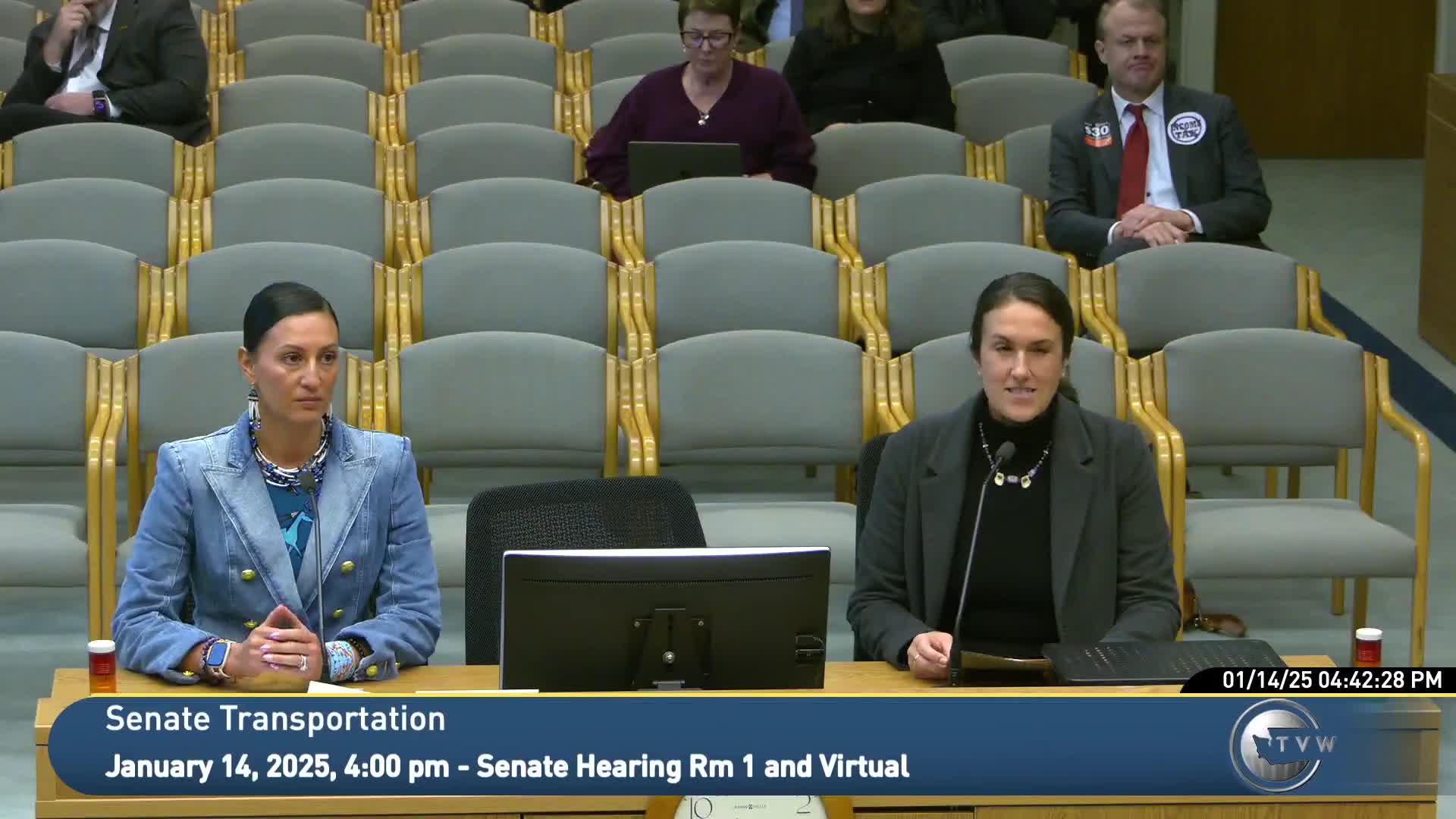Hoh Tribe seeks $8 million for Highway 101 safety improvements amid flooding threats
January 14, 2025 | Transportation, Senate, Legislative Sessions, Washington
This article was created by AI summarizing key points discussed. AI makes mistakes, so for full details and context, please refer to the video of the full meeting. Please report any errors so we can fix them. Report an error »

In a recent Senate Transportation meeting, discussions centered on a critical safety improvement project for Highway 101, particularly affecting the Hoh Tribe on the Olympic Peninsula. The Hoh Tribe has been advocating for funding since 2017 to construct dedicated turn lanes for both northbound and southbound traffic at a hazardous intersection near their reservation. This area experiences heavy logging traffic on a two-lane highway that is often dark and icy, contributing to a history of accidents.
Pegan Frank, a state lobbyist for the Hoh Tribe, highlighted the urgency of the project, noting that the current road conditions pose significant risks, especially for school buses and other vehicles turning onto the reservation. The closest emergency response team is stationed in Forks, Washington, approximately 45 minutes away, which raises concerns about response times during emergencies, particularly in harsh weather conditions common to the region.
The tribe's relocation efforts stem from increasing threats of flooding, erosion, and rising sea levels that have rendered their current lands unsafe. Although the legislature previously allocated $600,000 for the project, the funds were not fully utilized for the intended improvements. Instead, the Department of Transportation constructed a turn pocket that fails to adequately address the safety concerns at the intersection.
The Hoh Tribe is now seeking $8 million to complete the necessary turn lanes and install three culverts to enhance safety and accessibility. This funding request will be submitted through Senator Chapman, emphasizing the tribe's commitment to ensuring safe ingress and egress for their community.
The discussions at the meeting underscore the ongoing challenges faced by rural communities in securing adequate infrastructure funding and highlight the importance of addressing safety concerns on critical transportation routes. As the Senate considers this request, the implications for the Hoh Tribe and the surrounding area remain significant, with potential impacts on community safety and emergency response capabilities.
Pegan Frank, a state lobbyist for the Hoh Tribe, highlighted the urgency of the project, noting that the current road conditions pose significant risks, especially for school buses and other vehicles turning onto the reservation. The closest emergency response team is stationed in Forks, Washington, approximately 45 minutes away, which raises concerns about response times during emergencies, particularly in harsh weather conditions common to the region.
The tribe's relocation efforts stem from increasing threats of flooding, erosion, and rising sea levels that have rendered their current lands unsafe. Although the legislature previously allocated $600,000 for the project, the funds were not fully utilized for the intended improvements. Instead, the Department of Transportation constructed a turn pocket that fails to adequately address the safety concerns at the intersection.
The Hoh Tribe is now seeking $8 million to complete the necessary turn lanes and install three culverts to enhance safety and accessibility. This funding request will be submitted through Senator Chapman, emphasizing the tribe's commitment to ensuring safe ingress and egress for their community.
The discussions at the meeting underscore the ongoing challenges faced by rural communities in securing adequate infrastructure funding and highlight the importance of addressing safety concerns on critical transportation routes. As the Senate considers this request, the implications for the Hoh Tribe and the surrounding area remain significant, with potential impacts on community safety and emergency response capabilities.
View full meeting
This article is based on a recent meeting—watch the full video and explore the complete transcript for deeper insights into the discussion.
View full meeting
